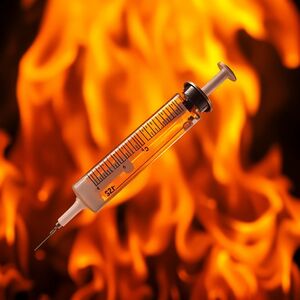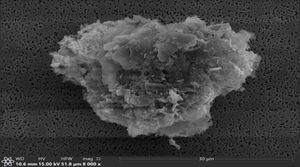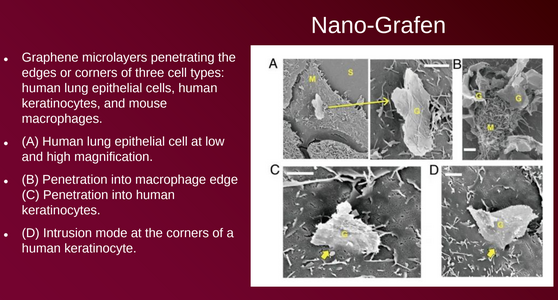CDS: A Solution for mRNA Vaccine Damage
By: Dr.h.c. Andreas Ludwig Kalcker
Chlorine Dioxide as a Solution for mRNA Vaccine Damage: A Critical Perspective
As the world grapples with the aftermath of the COVID-19 pandemic, the swift development and deployment of mRNA vaccines have been both a very questionable “scientific triumph and a subject of scrutiny”. While these vaccines have been falsly said to play a crucial role in controlling the spread of the virus, their long-term effects remain inadequately studied, raising concerns about many forcly silenced adverse reactions. In this context, chlorine dioxide (CDS) emerges as a viable therapeutic option, offering relief from some of the most concerning side effects associated with mRNA vaccines.

Concerns with mRNA Vaccines
The advent of mRNA vaccines was initially heralded as a revolutionary advancement in the field of immunization, promising to enhance public health outcomes through expedited development and deployment strategies. However, the accelerated pace at which these vaccines were introduced has precipitated significant scrutiny regarding their long-term safety profile. This has led to a substantial number of adverse events being reported, which has generated considerable apprehension among both healthcare professionals and the general public.
Of particular concern is the incidence of myocarditis, a condition characterized by inflammation of the myocardium (heart muscle), which has been predominantly observed in younger demographics following vaccination. Additionally, there has been an uptick in cases of Guillain-Barré Syndrome and Bell's Palsy, raising further safety considerations. Reports of cerebrovascular accidents (strokes) and the emergence of rapidly progressing malignancies, colloquially termed "turbo cancer," have also surfaced in some individuals post-vaccination, alongside instances of sudden unexpected deaths.
These observations necessitate a rigorous and comprehensive evaluation of the risk-benefit ratio associated with mRNA vaccines, underscoring the imperative for ongoing monitoring and research to elucidate potential causal relationships and to ensure the optimization of vaccine safety.
Chlorine Dioxide: A Potential Remedy but why ?
In light of these concerns, chlorine dioxide presents a solution. As detailed in recent studies, regarding our studies [ Link ] CDS possesses potent oxidative properties capable of neutralizing harmful spike proteins by oxidation and reducing inflammation oxidising Histamine.
Chlorine dioxide (CDS) is gaining attention in the medical field due to its exceptional oxidative properties, which are primarily driven by its electron transfer capabilities and high oxidation-reduction potential (ORP). These characteristics enable CDS to neutralize harmful proteins and mitigate inflammation effectively.
- Electron Transfer Mechanism: The core of CDS's therapeutic action lies in its ability to act as a potent oxidizing agent. It achieves this by accepting electrons from other molecules, such as pathogens or harmful spike proteins. This electron transfer process leads to the selective oxidation of these target molecules, resulting in their structural modification or inactivation. This capability is crucial for disrupting the integrity of harmful entities within the body, thereby reducing their pathogenic potential.
- High Oxidation-Reduction Potential (ORP): CDS's high ORP signifies its strong oxidative capacity. A high ORP enables CDS to efficiently accept electrons from other molecules, facilitating their oxidation. In biological contexts, this means effectively breaking down electron-rich structures in pathogens or harmful proteins, neutralizing them and reducing their impact on the organism. Conversely, CDS acts as an antioxidant against harmful OH or O- radicals, being reduced to H2O (water) or O2 (oxygen). This ability makes CDS the most significant discovery in medicine of the past 100 years.
- Biochemical Impact on Inflammation: One of the key mediators of inflammation is histamine, whose elevated levels can exacerbate inflammatory responses. Through its oxidative action, CDS is able to oxidize histamine, effectively reducing its bioavailability and activity. This reduction in histamine levels is essential for alleviating symptoms of inflammation, such as swelling and cytokine storm, which are common in allergic reactions and severe autoimmune conditions like covid 19 and others.
CDS works by oxidizing crucial specific amino acids in viral spike proteins, such as cysteine and tyrosine, denaturing the spike protein created by the genetic alteration caused by mRNA in the epithelial cells of the inoculated person, which help mitigate inflammatory responses such as myocarditis and others. Its ability to reduce oxidative stress suggests it could play a crucial role in addressing vascular issues like strokes by restoring cellular equilibrium disrupted by vaccine componentslike cationic polyethylene glycol and others.
Additionally, the systemic effects of chlorine dioxide may provide protection against the swift growth of cancer cells following vaccination. By decreasing lactic acid, the primary metabolite of cancer, and reducing oxidative stress while modulating immune responses, it seems potentially block the pathways responsible for aggressive cancer development. Many reported cases have shown cancer to be reduced and eliminated due to CDS treatment [ http://dioxitube.com ] . Sadly this real testimonies and medical reports have been censored on mainstream platforms like YouTube, Facebook, etc
Clinical Observations and Future Directions
Observational studies in Bolivia and Latinamerica of the COMUSAV association with more than 5000 medical doctors have showcased the efficacy of chlorine dioxide in treating COVID-19 patients, where in a study with 1132 the average recovery time was 4 days only using CDS. This fact underscore the need for clinical trials to explore its potential fully.
The rapid action of CDS is particularly advantageous for managing acute adverse reactions, offering a timely intervention to mitigate symptoms and restore health.
How can we diagnose vaccine damage ?
In individuals, particularly those who are young and actively engaged in physical activities, it can be challenging to detect underlying pathologies that may not manifest with overt clinical symptoms. To preemptively identify potential health risks that could precipitate severe consequences, it is prudent to conduct a comprehensive analysis of specific biomarkers. Two critical indicators in this context are D-Dimer and ferritin levels.
D-Dimer is a fibrin degradation product, and elevated levels may indicate abnormal clotting activity, which could suggest the presence of thrombotic events or other coagulopathies. In contrast, ferritin, an intracellular protein that stores iron, serves as a marker for iron metabolism and inflammation. Abnormal ferritin levels can signify iron overload or deficiency and may be indicative of systemic inflammation or infection.
By assessing these biomarkers, healthcare professionals can uncover latent pathological conditions that might otherwise remain undetected until they progress to more severe stages. This approach allows for timely intervention and the implementation of therapeutic strategies to mitigate potential adverse outcomes.
Such proactive measures are essential in safeguarding the health of young athletes and ensuring their continued ability to participate safely in sports activities.
What do D-dimer and ferritin levels indicate about the state of the body?
D-dimers
D-dimers are small protein fragments in the blood that are produced when a blood clot is broken down. Elevated D-dimer levels can indicate various medical conditions:
- Thrombosis: An elevated D-dimer level may indicate deep vein thrombosis (DVT) or pulmonary embolism.
- Disseminated intravascular coagulation (DIC): a condition in which blood clots develop throughout the body and excessive bleeding occurs at the same time.
- Other conditions: infections, liver disease, pregnancy, and some cancers can also cause elevated D-dimer levels.
Ferritin
Ferritin is a protein used by the body to store iron. Measuring the level of ferritin in the blood provides information about the body's iron stores. Abnormal ferritin levels can indicate a variety of conditions:
- Iron deficiency anemia: Low ferritin levels are often a sign of insufficient iron stores, which can lead to anemia.
- Inflammatory conditions and infections: Ferritin can increase as an acute phase protein in the presence of inflammation or infection.
- Iron overload: High ferritin levels can indicate iron overload, as occurs in hemochromatosis, for example.
Both D-dimer and ferritin are helpful markers for identifying or ruling out certain disease states, but they should always be interpreted in the context of other clinical findings and tests.
D-dimer reference values
D-dimer reference values can vary depending on the test method used and the laboratory. Generally, a level of less than 0.5 milligram per liter (mg/L) or 500 nanograms per milliliter (ng/mL) is considered normal. Levels above this cut-off may indicate the presence of blood clots or other medical conditions that require further investigation.
Ferritin reference values
Normal ferritin levels also vary depending on the laboratory, age, and gender. Here are general guidelines:
Men: 20-500 micrograms per liter (µg/L)
Women: 10-200 µg/L
Low levels may indicate iron deficiency, while high levels may indicate iron overload or inflammation in the body.
Elevated D-dimer and ferritin levels have been observed in most COVID-19 patients. However, these increases are not specific for the presence of the virus' spike proteins, but rather reflect a response by the body to the infection, particularly in the context of inflammatory processes and coagulation disorders:
- Elevated D-dimer levels may indicate increased clotting activity and blood clot breakdown, which is more common in severe COVID-19 cases with complications such as thrombosis.
- Elevated ferritin levels may be interpreted as part of the body's acute inflammatory response to infection.
However, these laboratory values are part of a broader clinical picture and must be considered in the context of other clinical information. They are not specific to COVID-19 and can also be elevated in a range of other medical conditions.
Treatment
According to COMUSAV doctors, CDS has proven effective not only in combating COVID-19 [link], long COVID [link], and providing protection against the virus and shedding [link], but it has also been notably successful in mitigating damage caused by the mRNA vaccine.
Using protocol C for oral intake over a period of 3-6 months has alleviated or eliminated symptoms in most cases.
For more severe situations, protocol E or EC can be added, and in extremely critical cases like Guillain-Barré syndrome, intravenous protocol Y can be utilized. Here's a testimony [Link].
Conclusion
The potential of chlorine dioxide as a solution for mRNA vaccine damage cannot be overlooked. Its ability to address inflammation, oxidative stress, and rapid cellular changes positions it as a vital tool in ensuring safer vaccination outcomes. As research continues, CDS may well become an integral component of post-vaccination care, providing much-needed reassurance to those concerned about the long-term safety of mRNA vaccines.
Post Data:
There have been numerous and widespread claims circulating about the presence and use of graphene oxide in the context of mRNA COVID-19 vaccines. These assertions have sparked a variety of discussions and debates, leading to both curiosity and concern among the public and scientific communities. During my time at the Swiss University Bern at theDepartment of Microbiology, specialized in stem cells, I had the opportunity to engage in insightful conversations with my colleagues regarding this topic. They provided a clear and detailed explanation, shedding light on the role of graphene oxide in scientific applications.

According to their expertise, graphene oxide is utilized as a non-chemical transducer. This means it can facilitate the introduction of various substances into cells. One of its remarkable properties is its ability to slightly cut open the cellular membrane, allowing substances to penetrate without altering or disrupting the biochemical values within the cell, unlike other chemical transducers that might cause unwanted alterations in Lab research.
Graphene oxide possesses an acidic pH level, approximately around 1.5, which renders it highly susceptible to oxidation and subsequent destruction. This vulnerability is primarily due to its structure, as it is extraordinarily thin, being only one atom thick. This unique characteristic makes it prone to rapid degradation when exposed to oxidative conditions.
Theoretically, graphene oxide may also function by oxidizing and causing damage to so-called nanobots through a process akin to oxidation or "burning." This potential mechanism adds another layer of complexity and intrigue to the ongoing discussions about its applications and effects.

These insights underscore the importance of continued research and dialogue in understanding the multifaceted roles and impacts of materials like graphene oxide in modern medicine and biotechnology. The ongoing exploration and evaluation of such substances are crucial in advancing our knowledge and ensuring the safe and effective development of innovative medical solutions.
